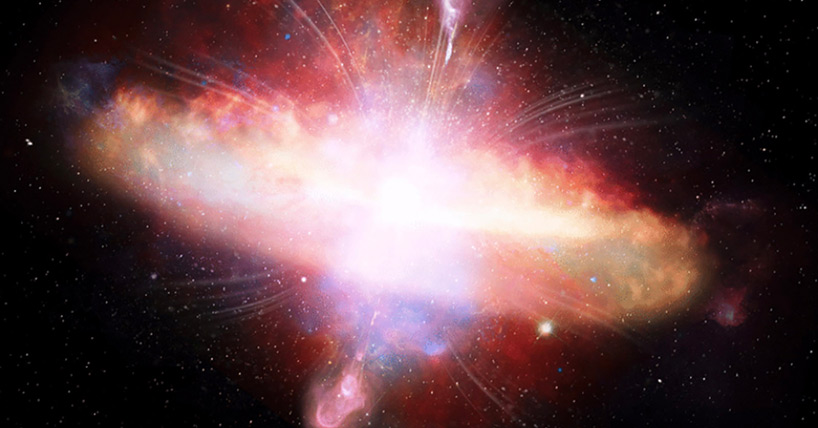
Quasars tagged posts


Caption: A new study suggests that high-energy neutrinos of blazars might be produced mainly during the gamma-ray flare phase.
Credit: NASA Goddard Space Flight Center from flickr (https://www.flickr.com/photos/24662369@N07/19578977022)
License type: CC BY 2.0
Gamma-ray flares from blazars can be accompanied by high-energy neutrino emission. To better understand this phenomenon, an international research team has statistically analyzed 145 bright blazars. They constructed weekly binned light curves and utilized a Bayesian algorithm, finding that their sample was dominated by blazars with low flare duty cycles and energy fractions. The study suggests that high-energy neutrinos of blazars might be produced mainly during the flare phase.
Blazars ...
Read More
Dr Victoria Fawcett
Astronomers have found a striking link between the amount of dust surrounding a supermassive black hole and the strength of the radio emission produced in extremely bright galaxies. The findings are published in the Monthly Notices of the Royal Astronomical Society.
The team of international astronomers, led by Newcastle University and Durham University, UK, used new data from the Dark Energy Spectroscopic Instrument (DESI), which is conducting a five year survey of large scale structure in the universe that will include optical spectra for ~3 million quasars; extremely bright galaxies powered by supermassive black holes...
Read More
(Credit: Anglés-Alcázar et al. 2021, ApJ, 917, 53.)
Cracking a mystery of massive black holes and quasars with supercomputer simulations. At the center of galaxies, like our own Milky Way, lie massive black holes surrounded by spinning gas...
Read More






Recent Comments